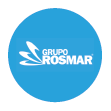With the recent introduction of a vaccine against Covid 19, the end of this dreaded era is thankfully now in sight—there is a glimmer of hope.
The Covid 19 era has forced all of us to learn a lot about hygiene more than we ever cared to.
When the world got to know about this deadly disease, everyone was rushing to pick the last disinfectant left on the shelves, and the manufacturers couldn’t keep up. But how effective have they been in the war to contain the deadly virus?
It would be natural for you to assume that hospitals have been germ-free zones given the exposure to information and the kind of thorough cleaning that is expected to be done there. Well, 50% of surfaces in hospitals are not clean even after disinfecting. Cases of hospital-acquired SARS-Cov-2 are currently on the rise.
Why are current procedures of disinfecting failing?
Disinfecting Challenges in the Covid Era
Covid 19 is known to mainly spread from one person to the next through the air in droplets. But there is also indirect transmission from surfaces, hence the massive attention on disinfectants.
But the current standards of disinfection are not meeting the CDC recommendations.
And that does not seem to be the only problem with the current use of disinfectants.
- The sterility created by the disinfectant does not last for long
- The use of disinfectants supports the growth of resistant antimicrobial strains
- The high cost of disinfectants means some household cannot afford them and therefore don’t disinfect
- There is limited information on the preparation, storage, and use of disinfectants causing irreversible effects on people’s health
- The production of counterfeit disinfectants giving people a false sense of security
- Most people do not observe the recommended contact time that is critical in the effectiveness of a disinfectant
Given all these challenges, is there is a better way?
Until herd immunity is achieved, the world will continue to seek new and improved ways to beat the virus into submission. That has brought about the rise of a new protective solution going by the name Self-disinfecting surfaces.
The world needs to be better prepared when the next viral pandemic hits. The answer could be biomimicry.
What is Biomimicry?
Nature seems to have the best secrets of survival.
To survive, man has had to learn, imitate, and get inspiration from animals, plants, and microorganisms. For example, the gecko feet are the inspiration behind the creation of climbing pads.
Since man has found a way of copying things from nature to solve modern problems, our desperation to find a disinfectant that works effectively has led us to seek solutions in the same direction.
This time it’s the sharks that have become man’s inspiration.
A shark’s skin has a substance called microtopography that makes it hard for pathogens to attach themselves. So, man’s idea is to imitate the same by creating self-disinfecting surfaces to help keep pathogens at bay.
Biomimicry is the idea behind self-disinfecting surfaces.
How does Self-disinfecting Surfaces Work?
What if surfaces could either repel or damage pathogens upon contact and not have to be wiped down or get sprayed with disinfectants.
Artificial surfaces cannot protect themselves from the growth of microbes.
However, some chemicals and metals such as copper and silver are antimicrobial by nature. Such metals and chemicals can be infused into different things and surfaces to kill or degrade pathogens upon contact.
That is how disinfecting has evolved to improve its efficacy and reduce the adverse effects of current disinfectants.
What makes these materials different is the photosensitizers in them.
How do self-sterilizing surfaces help?
Such surfaces will either repel microbes or kill them upon contact.
To make surfaces self-sterilizing:
- Surfaces are stuffed with a biocide that will render germs harmless or kill them on contact. Such would be like the active ingredients in the usual disinfectants such as chlorine.
- Surfaces covered with material or paint that resists or degrades pathogens upon contact
- Simply changing the texture of the surfaces to make it unsuitable for pathogens to inhabit
The Big Picture
The Covid 19 pandemic is a wake-up call to the health industry, and it’s clear that something is not right with the current standards of hygiene. There is an obvious need for innovation.
Since nature seems to be the best place to borrow ideas from for that much-needed effectiveness, that has resulted in the all-new technology referred to as self-disinfecting surfaces.
But this has also not been without some reservations, including:
- High cost of the materials – It is, however, cheaper to install copper surfaces than to fighting pathogens repeatedly.
- Discoloration of copper due to corrosion- The concern is that when the copper becomes tarnished, it is less effective. However, it has there is proof that copper remains effective even when discolored.
- Current disinfecting practices are adequate- Current disinfecting methods do not eliminate all pathogens. Those that remain will eventually grow and repopulate since the surface will not remain sterile for long.
Disinfecting is the best way to eliminate pathogens, especially during a pandemic crisis. However, disinfecting the same way without achieving the effectiveness required is a waste of resources.
Instead of doing away with disinfecting altogether, we can find a way to improve it, and that is what the future has to offer as far as disinfecting and dealing with pandemics is concerned.


